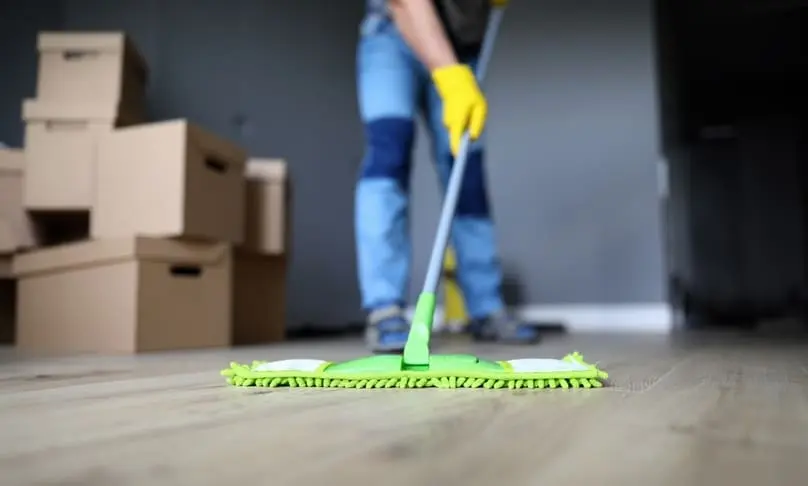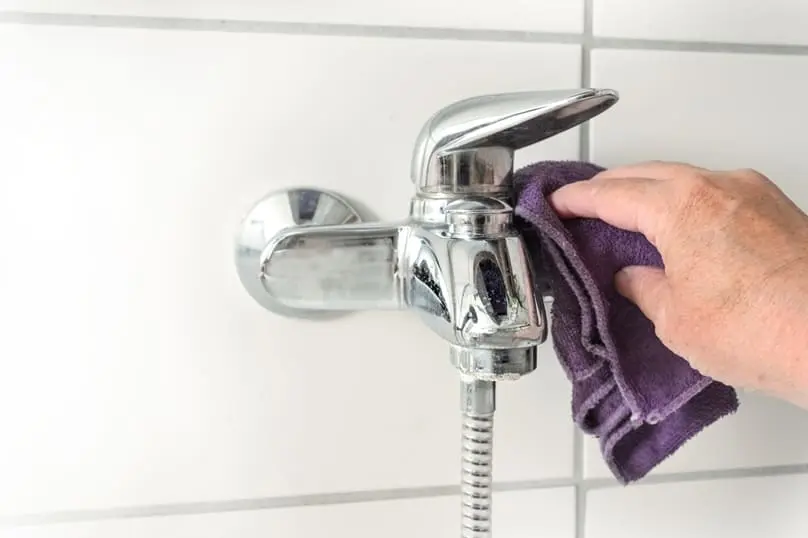Are you searching for how to remove limescale from faucet fixtures without damaging them? Hard water minerals, especially calcium, cause buildup. This limescale results from dissolved minerals in hard water. Over time, calcium deposits create unsightly stains and even damage faucets.
If you don’t learn how to remove lime from faucet surfaces quickly, buildup worsens, leaving bathrooms and kitchens looking dull and neglected. The good news is you can try DIY methods for limescale removal from taps, or hire trusted Palm Beach cleaning professionals.
Read on for practical tips on how to get rid of limescale on faucet surfaces and restore your fixtures to sparkle.
What Causes Calcium Buildup in Faucets?
Hard Water and Mineral Deposits
Calcium buildup, or limescale, occurs when hard water evaporates and leaves minerals behind. These deposits restrict water flow and pressure.
Why It’s a Common Problem in Florida Homes
Florida homes face more limescale because aquifer water, which is filtered through the massive limestone of the Floridan aquifer system, contains dissolved limestone minerals. Knowing how to remove lime buildup protects plumbing fixtures.
To prevent damage, many homeowners invest in water softeners or filtration systems. These reduce minerals before they become difficult limescale deposits.
Step-by-Step: How to Remove Limescale from a Faucet
Supplies You’ll Need (White Vinegar, Towels, Rubber Bands)
The best part is you probably already have what’s needed for how to remove calcium from faucet surfaces. The list includes:
- White vinegar
- Rubber bands
- Paper towels
- Sponge
- Soft cloth
Removing the Aerator
Before learning how to remove limescale from faucet fixtures, start with the aerator. This small tip often collects stubborn calcium buildup.
To remove it, wear rubber gloves, twist counterclockwise, and detach it. Then soak the aerator in vinegar for one hour. This step is essential in mastering how to remove limescale from faucet components effectively, since most deposits accumulate inside the aerator.
Soaking and Scrubbing the Faucet
Next, in how to remove limescale from faucet cleaning, soak paper towels in vinegar and wrap them around the faucet’s affected areas. Secure with rubber bands and let sit for one hour. This softens deposits and makes scrubbing significantly more effective afterward.
For best results when practicing how to remove limescale from faucet surfaces, use a sponge and scrub gently to avoid scratching finishes.
Final Rinse and Dry
After one hour, scrub the aerator and faucet with a sponge, then rinse thoroughly. Dry with a clean, soft cloth. Completing this process shows why knowing how to remove limescale from faucet fixtures prevents lasting damage and keeps water flow consistent.
How to Make Stainless Steel Faucets Shine
Using Baby Oil and a Soft Cloth
Once you’ve mastered how to remove limescale from faucet surfaces, enhance shine by applying baby oil with a soft cloth. Not only does this polish stainless steel, but it also prevents new stains, keeping your faucet spotless longer.
Natural DIY Faucet Cleaning Methods
Chemical-Free Cleaning Benefits
When learning how to remove limescale from faucet fixtures, natural methods provide safer results for your health, environment, and plumbing longevity. Eco-friendly ingredients like vinegar, baking soda, and lemons effectively dissolve mineral deposits, bacteria, and grime without creating harmful chemical reactions.
Vinegar-Based Solutions
White distilled vinegar is one of the best natural options when deciding how to remove limescale from faucet surfaces safely and effectively.
Materials Needed:
- White distilled vinegar
- Small plastic bag
- Rubber band
- Old toothbrush or soft cloth
Procedure:
- Pour enough vinegar into the bag to cover the faucet head completely.
- Secure the bag with a rubber band, ensuring the faucet remains fully immersed.
- Let it soak for at least 30 minutes, or a few hours for heavy buildup.
- Use a toothbrush to scrub away loose mineral deposits.
- Rinse thoroughly and dry with a microfiber cloth to avoid water spots.
This method is a top recommendation for homeowners searching for how to remove limescale from faucet fixtures using everyday household items.
When to Call a Professional Cleaning Service
Heavy Buildup or Time Constraints
If you’ve already tried home remedies but can’t figure out how to remove limescale from faucet surfaces effectively, or simply don’t have the time, it may be best to let professionals step in. Hard water stains and stubborn buildup can be tricky—and Yorleny’s Cleaning Services has the right tools and experience to handle them.
Benefits of Hiring Yorleny’s Cleaning Service
Whether you’re struggling with faucet buildup, need help maintaining wooden shelves, or want your light fixtures to shine again, Yorleny’s Cleaning Services is here to help. Our team is professional, bonded, and insured—delivering results that keep our clients coming back.
Instead of spending your free time scrubbing, enjoy a relaxing day at Palm Beach’s Whitehall Museum while we ensure your home sparkles. Contact us today and discover why locals trust us for dependable, high-quality cleaning.
Book your professional cleaning with Yorleny’s Cleaning Services and let us take care of the hard work while you enjoy your time.
FAQ: Limescale, Cleaning, and Maintenance
Can vinegar damage stainless steel faucets?
Yes, vinegar’s acidity can cause staining, corrosion, or dullness over time on stainless steel faucets, particularly with extended contact or for lower-quality stainless steel. While short-term cleaning is OK, it is preferable to use a diluted solution and rinse quickly, or to clean the faucet on a regular basis with warm soapy water or a dedicated stainless steel cleaner to retain the finish and avoid corrosion.
How often should I clean my faucet in Florida?
In Florida, the frequency with which you should clean your faucet is mostly determined by the hardness of your water. Because much of Florida has hard water with significant mineral content, you should plan on cleaning faucets once a week to minimize limescale and mineral accumulation.
In addition to weekly cleaning, you should execute daily wipe-downs and monthly maintenance to avoid obstinate mineral deposits.
What’s the safest way to remove calcium deposits from faucets?
The safest way to eliminate calcium deposits is to soak affected areas in a bag of vinegar for at least 30 minutes to several hours before cleaning the residue with a toothbrush. Commercial descalers are also an option, but they must be used with caution and particular instructions to avoid destroying certain materials.
Recent Articles

How to Clean a Microfiber Couch: Step-by-Step Guide
Microfiber is a revolutionary and incredibly soft material for sofas and armchairs, but if you’re wondering how to clean a microfiber couch,…

Best Way to Clean Patio Furniture (Step-by-Step Guide for Florida Homes)
As long as you have a patio, terrace, or covered porch, you only need one thing to create a welcoming atmosphere: outdoor…

Move In Cleaning Service vs DIY: Which Saves More Time and Stress?
Moving always brings a mix of emotions. The process feels overwhelming, especially when comparing move in cleaning service vs DIY options. This…
An overview of the areas we serve
See below to check if our top-quality house cleaning services are available in your city and book your first appointment with just a few clicks.
